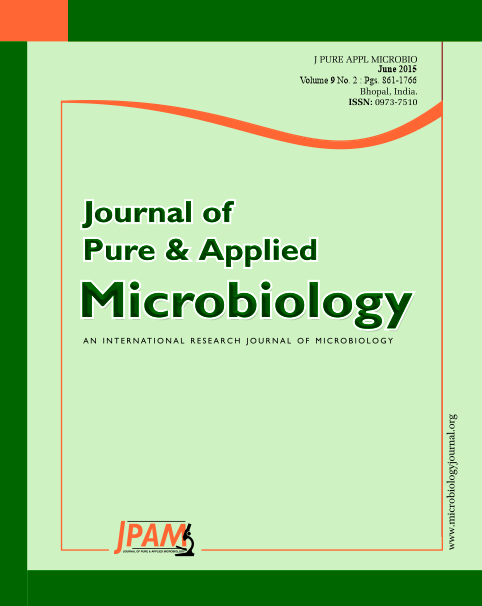The objective of this current work is to study about phenol degradation ability of the immobilised Rhodococcus sp. NAM81. The present investigation evaluates the suitability of five matrices; gellan gum, calcium alginate, agarose, agar-agar and polyacrylamide upon the immobilisation of Rhodococcus sp. NAM81 for phenol degradation. Among all of these matrices, gellan gum was proven to be the most effective and suitable matrix as it exhibits higher phenol degradation (99.9%) compared to other matrices studied. Maximum phenol degradation has been achieved at gellan gum with the concentration of 0.7% (w/v), bead size of 4 mm diameter (estimated surface area of 50.26 mm2), 4 g/Lof cell loading and 350 numbers of beads per 100 mL medium. Both free and immobilised bacteria exhibited similar rates of phenol degradation at phenol concentration of 100 mg/L, the immobilised bacteria exhibited a higher degradation rate of phenol at higher phenol concentrations. The immobilised cells completely degraded phenol within 108, 216, and 240 h at 1100, 1500 and 1900 mg/L phenol, respectively, whereas free cells took 240 h to completely degrade phenol at 1100 mg/L.However, the free cells were incapable of completing phenol degradation at higher concentrations. Overall, the rates of phenol degradation by both immobilised and free bacteria decreased gradually as phenol concentration increased. It also proved that inhibition by heavy metals and respiratory inhibitors decreased by gellan gum encapsulated the cells. The immobilised cells showed no sign of losses in phenol degrading activity after being used repeatedly for 50 times of 18 h cycle and still stable after storing at 4ºC for 28 days. The study has showed that the effectiveness of phenol degradation was greater using immobilised cells in gellan gum compared to free living cells. Presumably, this is the first attempt of phenol degradation using the immobilised Rhodococcus sp in gellan gum. The gellan gum-immobilised cells showed potential candidature for phenol degradation.
Rhodococcus sp.,encapsulation, gellan gum, phenol, biodegradation
© The Author(s) 2015. Open Access. This article is distributed under the terms of the Creative Commons Attribution 4.0 International License which permits unrestricted use, sharing, distribution, and reproduction in any medium, provided you give appropriate credit to the original author(s) and the source, provide a link to the Creative Commons license, and indicate if changes were made.


